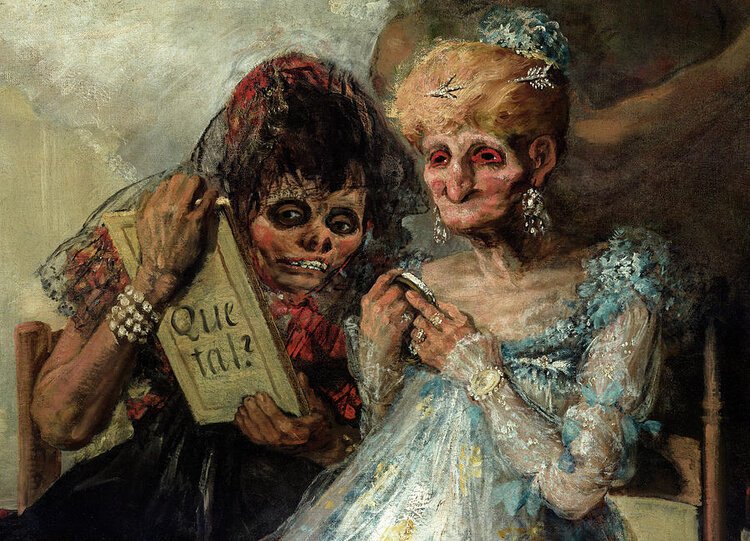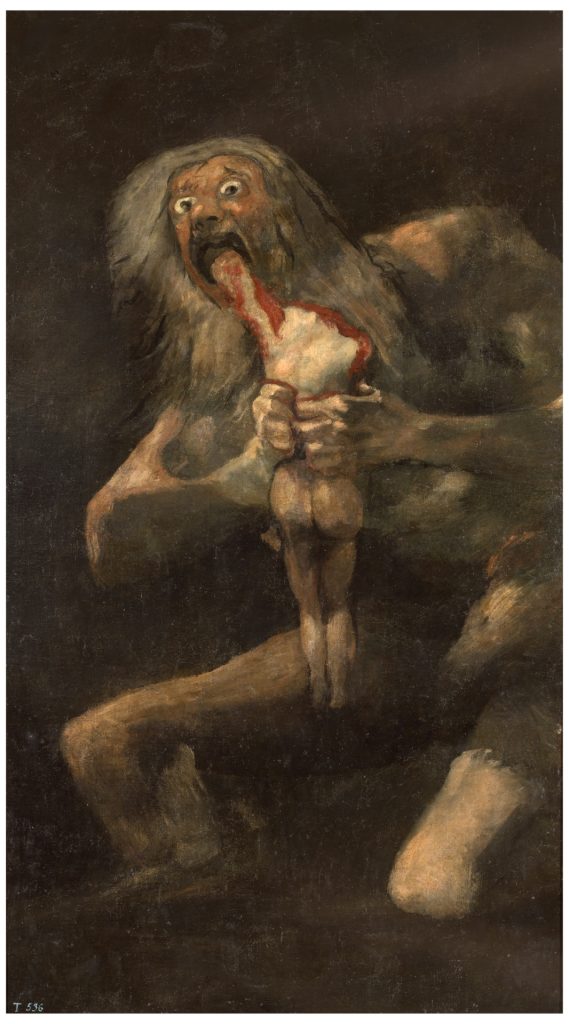Manjeera
Knowledge can be gained at any age. After having a detailed study on topics there are things unknown to us. So, we at Abirpothi present before you the lesser-known facts about artists around the world.
Francisco Goya
“Fantasy, abandoned by reason, produces impossible monsters; united with it, she is the mother of the arts and the origin of marvels.”
―
Francisco José de Goya y Lucientes, more commonly referred to as Goya, was a Spanish painter and printmaker who lived from 1746 to 1828. He is considered one of the most important Spanish artists and produced the majority of his works in the transition period from the Baroque to the Romantic era. Goya worked for the Spanish court, creating portraits of the royal family, as well as more personal and critical works that commented on the social and political issues of his time. His later works are characterized by their dark, introspective themes that explore the madness of the mind. Goya is often seen as a precursor to the modernist movement.
11 lesser-known facts about Francisco Goya
-
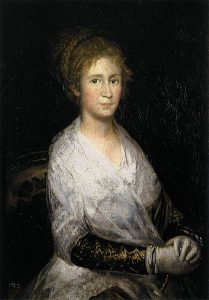
Portrait of Josefa Bayeu (1747-1812), painted by the artist
Courtesy: Wiki CommonsGoya married his own mentor Francisco Bayeu’s sister Josefa Bayeu in 1773. Francisco Bayeu was a court painter for King Charles III of Spain.
- He was denied access to the Real Academy of Fine Arts in San Fernando twice, in 1763 and 1766.
- After his death, his body was posthumously re-interred in the Real Ermita de San Antonio de la Florida in Madrid. Famously, the skull was missing, a detail the Spanish consul immediately communicated to his superiors in Madrid, who wired back, “Send Goya, with or without head.”.
- His artwork, La Maja Desnuda (The Nude Maja) has been described as “the first totally profane life-size female nude in Western art”. The identity of the model is unknown but is speculated to be the mistress of Manuel de Godoy, the first Secretary of Spain, who commissioned the painting. In 1813, the painting was confiscated by the Spanish Inquisition for being “obscene”.
-
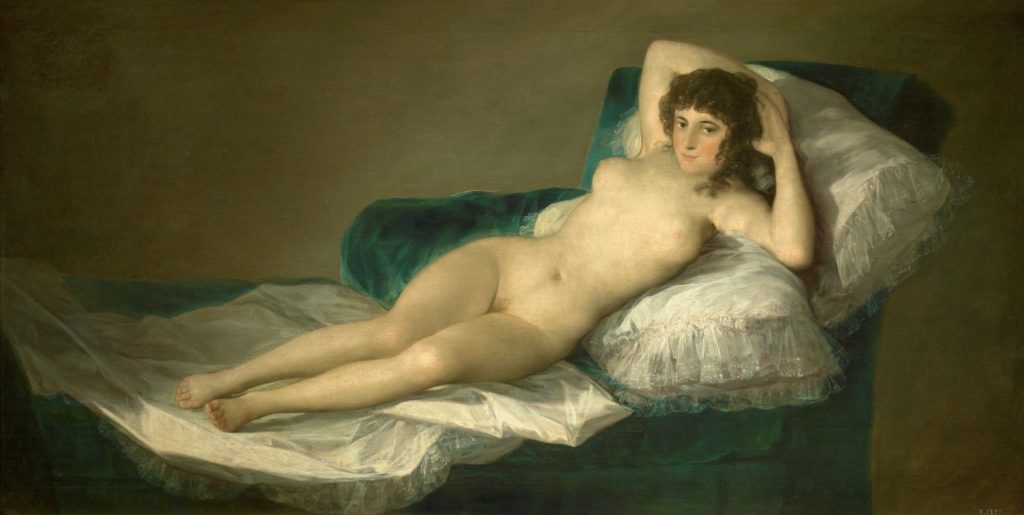
La Maja Desnuda by Goya
Courtesy: Museo del Prado- The artist suffered from a mysterious illness that made him deaf and caused a series of mental disturbances. No concrete cause to this has been identified; some say it’s viral encephalitis, others say it’s lead poisoning due to the toxic paints he used, while few others lay blame on the political circumstances as the French had declared war on Spain.
- Goya was appointed as the First Court Painter in 1790, which is the highest position available to an artist at the Madrid court with a salary of 50,000 reales and an allowance of 500 ducats.
- He was also a prolific printmaker in addition to being a painter and had created at least a hundred etchings. He created a series of 82 prints called The Disasters of War as a response to Napoleon’s invasion of war, the Peninsular war, and a devastating famine.
- His painting, The Third of May 1808, is considered to be staunchly anti-war. This was revolutionary for its time, as War in this time period was usually glorified. In Goya’s paintings, the faces of the French soldiers are obscured while the Spanish revolutionaries are drawn in a christ-like manner, complete with signs of stigmata.
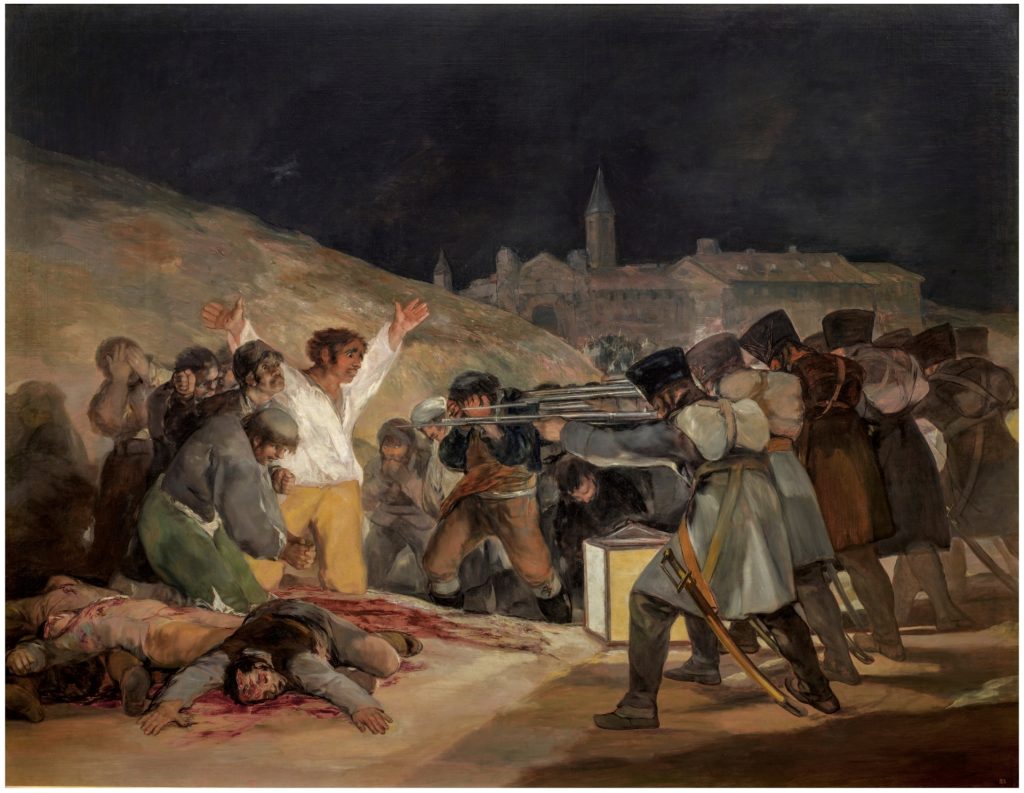
The Third of May 1808 (1814) by Goya
Courtesy: Museo del Prado - Goya is considered to be the last of the Old Masters and the first of the Modern masters, his paintings showing the drastic transition from the bright and cheerful palette of his early works to the dark and somber themes of his latter work.
- A group of 14 paintings, often known as the Black Paintings, were drawn directly on the plastered walls of his home. They are characterized by intense, haunting themes, reflecting his fear of insanity and his disillusionment with politics and life. Saturn Devouring His Son, one of the seminal works from the Black Paintings, was painted in the artist’s dining room.
- Some historians believe that Goya was involved in a romantic affair with the 13th Duchess of Alba, dubbed the Black Duchess. She was prominently featured twice in two paintings, The Black Duchess (1797) and The White Duchess (1795). The former was painted after the death of her husband, and curiously, the figure of the Duchess in the painting is pointing her finger to the ground, where the words “solo Goya” are lightly engraved. The figure also dons two rings, with the names Alba and Goya on them.
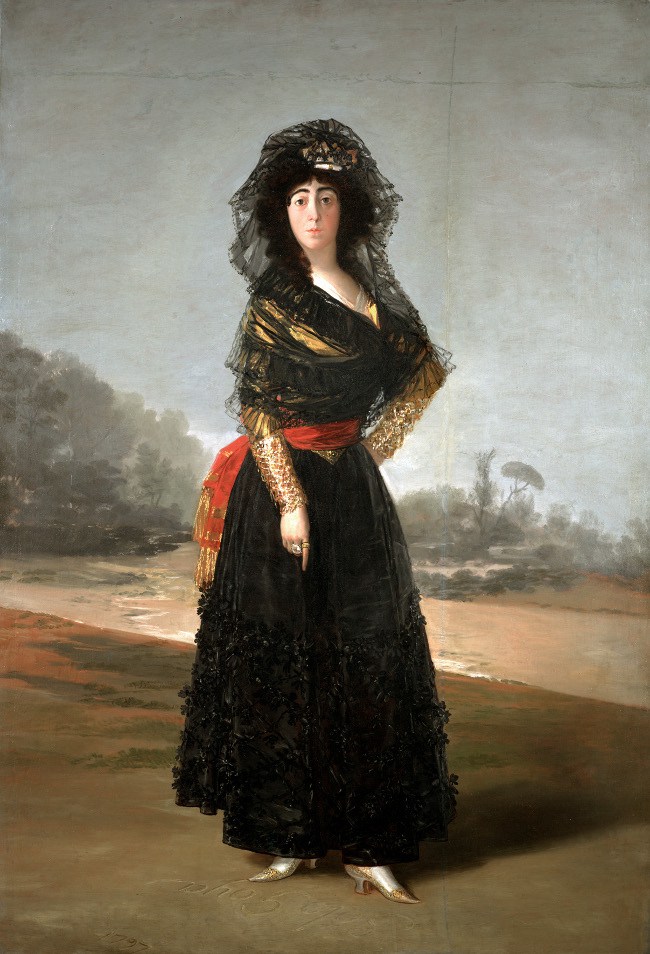
The Black Duchess (1797)
Courtesy: Wiki Commons
One of the Black Paintings, Witches’ Sabbath, 1819–1823
Courtesy: Wiki Commons

